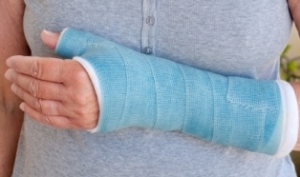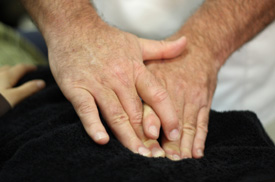Physical Therapy Treatment for Lower Extremity Stress Fracture
 Stress fractures most commonly affect bones that undergo mechanical fatigue. These injuries are common among athletes and military recruits. Lower extremity stress fractures are more common than the upper extremities. Female athletes are more likely to develop stress fractures than the males. Apart from the athletes, workers who spend their workday on hard floors are also at the risk of developing these stress-fractures.
Stress fractures most commonly affect bones that undergo mechanical fatigue. These injuries are common among athletes and military recruits. Lower extremity stress fractures are more common than the upper extremities. Female athletes are more likely to develop stress fractures than the males. Apart from the athletes, workers who spend their workday on hard floors are also at the risk of developing these stress-fractures.
What do we mean by Lower Extremity Stress-Fracture?
Stress fracture is a small crack in the bone which occurs when the bone is affected due to repetitive activities in a similar way over time. Due to stresses the normal process of bone breakdown and reformation also get changed. The stress fractures generally occur in weight-bearing bones of foot and lower leg.
How do the Stress Fractures occur?
When muscles lose their ability to bear shock of repeated stress and pounding due to fatigue and over exertion, the impact forces get transferred to the bones of lower extremity and feet resulting into small cracks or stress fractures to form in the bones. Because of being too small, these fractures are not initially visible on the X-rays. These fractures are more common in feet and legs because they bear weight during walking, running and jumping.
What are the causes of Stress-Fractures?
Trauma is the most common reason of stress fracture. Participating in sports or other high impact activities or falls result into such trauma. Apart from this, other common causes of stress fractures include:
- Motor vehicle accidents, falls or crush injuries
- Repetitive stress injury
- Sporting Activities
- Osteoporosis
- Excessive impact physical activities with inappropriate rest
- Sudden increase in physical activity
- Metabolic Disorders
- Consuming more than 10 alcoholic beverages per week
- Smoking
- Low calories and vitamin D intake
- Track (Running Sports)
- Eating disorders and amenorrhea
What are the common signs and symptoms of Stress-Fractures?
Stress fractures commonly hurt when you walk, run or jump. With lower extremity stress-fractures you may experience symptoms like:
- Sharp pain in a very specific point over the top of bone
- Aching pain after activity
- Swelling and tenderness at the sight of injury
- Visible deformity of the bones
- Feeling pain while moving ankle or foot
- Decreased ability to walk or to bear weight on the affected leg
What type of Rehabilitation exercises can help to treat Lower-Extremity Stress Fractures?
Most commonly the stress fractures are treated by resting the leg. Your physical therapist may advice you to stop participating in the activities like: running or jumping for three weeks at least in order to begin healing process for bone. A complete and customized rehabilitation program would be designed to speed up your recovery. Your treatment program may include:
- Range of motion exercises may be suggested to restore full movement of leg joints
- Muscle strengthening exercises may be suggested to increase the shock-bearing potentiality of leg for future injuries. Muscle strengthening exercises are advised, also because stress-fractures result due to underlying weakness in the legs.
- Specialized training exercises are suggested to educate you to respond to changes in the environment such as uneven or hard surfaces
- Body awareness and balance training exercises may be suggested to help you to speedily return to your normal routine
- When you are able to walk freely, your physical therapist may start over with functional training including slow and progressive weight-bearing activities. A unique training program depending upon therapist’s examination of your legs, general activity level and general health will be developed.
- Considering your job or sports requirement; activity-specific training is also provided. If you need additional rehabilitation for your job or sport, your physical therapist may develop an individualized treatment program taking all these requirements into account.
- Manual therapeutic techniques including; soft tissue massage and joint mobilization may be advised to restore normal joint mechanics and range of motion.
- Home exercise program including: stretching, strengthening and stabilization exercises may be prescribed to help the person to perform daily tasks and to help the patient to progress to the next functional level.
- Neuromuscular Re-education (NMR) may be advised in order to improve proximal joint stability, movement techniques and mechanics and to restore stability.
If you have suffered a workplace injury and seeking rehabilitative care as a part of your Workers’ Compensation benefits, Contact Advanced Work Rehab Center. Our trained and dedicated physical therapists will definitely help you to reduce your pain, restore strength and energy and improvise your function and mobility.

